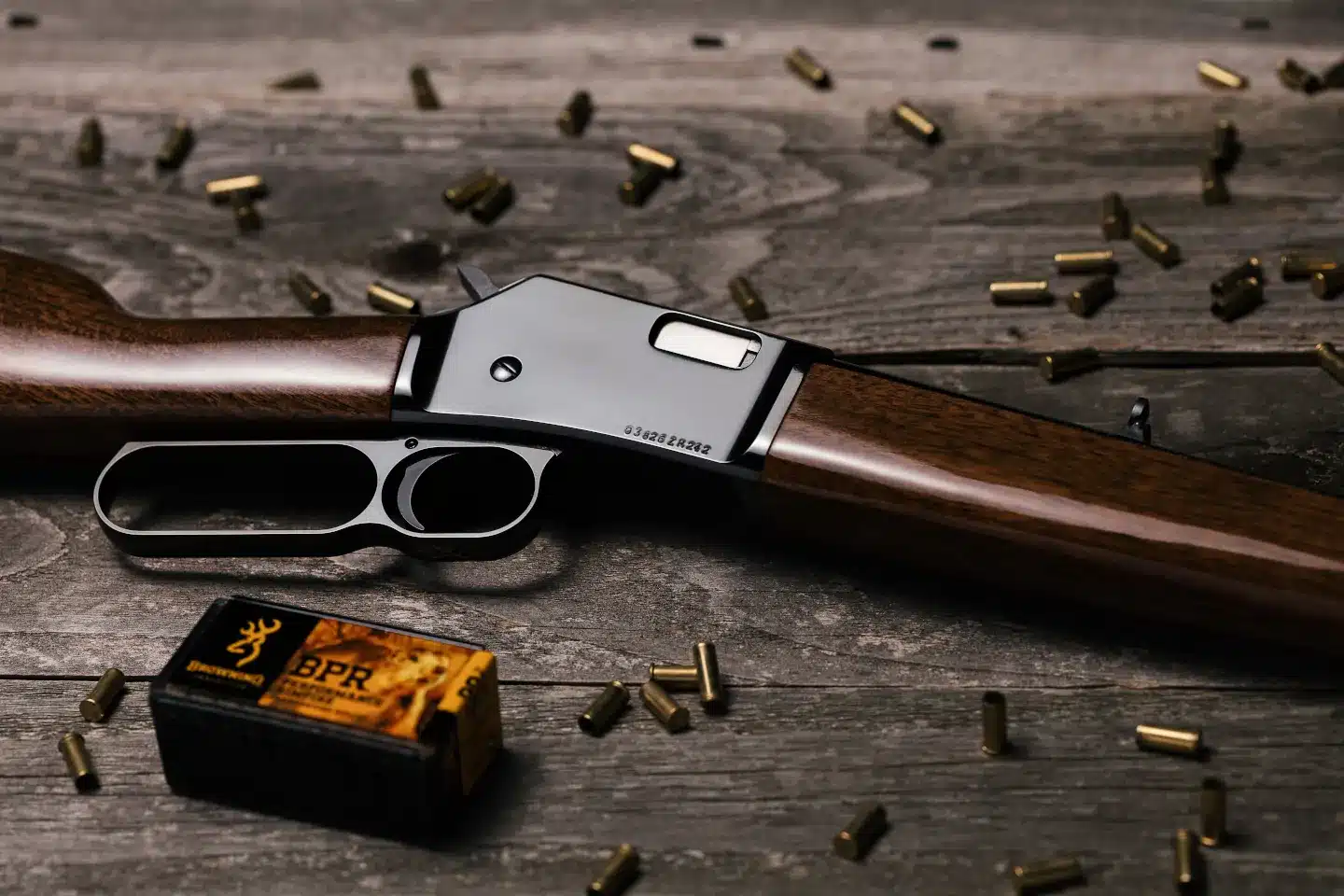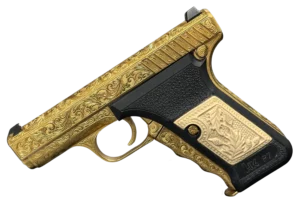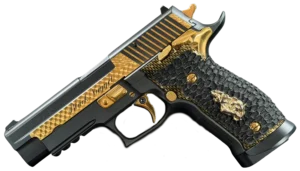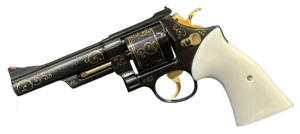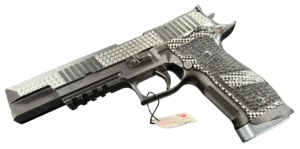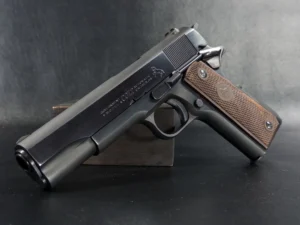Key Takeaways:
- Browning didn’t just make guns — he rewrote the playbook on how firearms should be built: From the M1911 to the Auto-5, his designs weren’t just technically impressive; they were intuitive, reliable, and ahead of their time. Even now, his blueprints continue to quietly shape the engineering of modern guns, whether for sport, defense, or combat.
- His firearms weren’t just tools of war — they were companions in the field and works of art at home: Browning had a knack for blending mechanical brilliance with an eye for what shooters needed. Whether it was a battle-tested machine gun or a finely crafted over-under shotgun, his work always hit that sweet spot between rugged utility and elegant form.
- Browning’s legacy isn’t trapped in history books — it’s living and breathing in every shot that counts: His principles still guide gunsmiths today. And every time someone feels the smooth action of a lever rifle or trusts their life to a well-designed sidearm, they’re carrying forward a piece of his vision, often without even realizing it.
When you hear the name John Moses Browning, you’re not just thinking of a man — you’re thinking of a legacy that shaped how the world designs, uses, and respects firearms. His story isn’t some distant footnote in a history book. It’s alive in every trigger pull, in every reliable shot fired from a design that traces its roots back to him. From a small workshop in Ogden, Utah, to global influence across military and civilian spheres, Browning didn’t just build guns. He built trust.
Let’s walk through his life, his work, and why, more than a century later, he’s still the standard everyone’s chasing.
From a Workbench in Utah to Firearms on the World Stage
Picture a dusty gunsmith shop in 19th-century Ogden. That’s where it started. A teenage John Moses Browning, learning the trade under his father’s watchful eye, quickly showed he wasn’t just tinkering. He was creating.
By 1883, he’d filed his first patent — the Single Shot Rifle. Not flashy, but brilliant in its simplicity. That one invention opened the floodgates. What followed was an avalanche of innovation: over 120 patents, each a new chapter in what became a blueprint for modern gun design.
From the hard-hitting Colt .45 favored in the Old West to the battlefield-dominating Browning Automatic Rifle (the BAR), his work never settled for “good enough.” Everything had to function smoothly, shoot reliably, and last through hell and back.
Browning didn’t chase trends. He set them — quietly, methodically, and with a kind of mechanical poetry that’s still studied today.
He Didn’t Just Build Guns — He Changed the Way We Think About Them
So, what made Browning’s designs stand out? It wasn’t just engineering skill — though he had that in spades. It was how his ideas married practicality with forward-thinking features, often years ahead of their time.
Take the Auto-5, for instance — the world’s first semi-automatic shotgun. Using a long recoil system that looked almost like magic to most hunters at the time, it gave shooters faster follow-up shots and changed bird hunting forever. It’s not just clever; it’s game-changing.
Or the M1911. If you know firearms, you know this pistol. Chambered in .45 ACP and built like a tank, it became the sidearm of choice for U.S. forces — and stayed in service for more than 70 years. That kind of staying power doesn’t happen by accident. It happens when a design hits the sweet spot between durability, ease of use, and sheer firepower.
And then there’s the Browning Hi-Power. A sleek 9mm pistol ahead of its time, it introduced the idea of a double-stack magazine long before it became the norm. It’s one of those designs that quietly set the standard, and everyone else just followed.
What ties all these guns together? They worked. They felt right in their hands. And they looked good doing it.
Browning on the Battlefield: Tools of War Built to Last
Let’s be honest — wars have a brutal way of testing machinery. And Browning’s designs? They didn’t just survive. They thrived.
The Browning Automatic Rifle (BAR) changed the face of ground combat in World War I. Suddenly, soldiers had portable automatic firepower — something unheard of before. It gave infantry squads a whole new way to fight, especially when trench warfare demanded something more than bolt-action rifles.
But Browning didn’t stop there.
Enter the M1919 — a belt-fed machine gun that became a cornerstone of U.S. military firepower. Reliable, air-cooled, and versatile, it was used everywhere from the beaches of Normandy to the jungles of the Pacific. And then came the beast: the M2 .50 caliber “Ma Deuce.” Introduced in the 1920s, it’s still in use today — a weapon so well-designed it practically refuses to retire.
These weren’t just weapons. They were lifelines. Browning understood what soldiers needed: guns that worked when it mattered most, no matter the mud, rain, or chaos around them.
And honestly? That’s part of why his name still carries weight with veterans and historians alike.
Firearms for the People: Browning’s Civilian Craftsmanship
Browning wasn’t just a war designer. He had a real feel for what hunters, sport shooters, and collectors wanted, too. And let’s not forget — those are very different needs from the battlefield.
One of his most beloved civilian contributions came late in his career: the Superposed shotgun. It was sleek, elegant, and — perhaps most importantly — Browning’s answer to the traditional side-by-side design. The stacked-barrel layout gave shooters faster target reacquisition and cleaner breaks. Introduced in the 1930s, it became a symbol of craftsmanship that’s still admired today.
Then there’s the BLR — Browning’s take on the lever-action rifle. Built for hunters who needed quick follow-up shots with serious power, it had the reliability of an old-school repeater but felt like a modern tool. Clean lines. Smooth action. Everything just worked.
And if you wanted something smaller? He had you covered there, too. The Baby Browning — a pocket-sized .25 ACP pistol — became a favorite for concealed carry and personal defense, showing his ability to design across the full spectrum of needs.
His firearms weren’t just practical; they were personal. They felt made for you.
His Blueprint Still Shapes the Industry
You’d think that after all this time, the world might’ve moved on. But nope — Browning’s fingerprints are still all over the gun world.
His recoil systems? Still in use. His locking mechanisms? Copied, tweaked, respected. His balance of form and function? A benchmark even the flashiest modern manufacturers quietly aim for.
Gunmakers from SIG Sauer to FN Herstal still use elements of his designs — or at least draw inspiration from them. And whether you’re holding a hunting rifle, a tactical shotgun, or a concealed carry pistol, there’s a pretty good chance you’re using something rooted in Browning’s early ideas.
Even the way we talk about reliability and simplicity in firearm design — that’s Browning’s language. He wasn’t just solving mechanical puzzles. He was building a philosophy. One that still holds up.
The Cultural Weight of a Name
John Moses Browning isn’t just a figure in blueprints and patents. He’s a name that carries weight in every corner of gun culture.
Collectors treasure his originals like crown jewels. Museums showcase his work with reverence. Enthusiasts write books and film documentaries to keep his legacy alive. And whenever a new shooter discovers that their favorite pistol traces back to Browning? It’s like finding out the roots of a family tree.
More than anything, Browning’s legacy has a heartbeat. It’s felt every time a gun performs exactly when it needs to. Every time someone marvels at a design from a century ago that still competes with modern builds.
He made tools, but he also made history.
Final Thoughts: Browning Didn’t Just Influence — He Defined
John Moses Browning wasn’t a man who chased accolades. He let his work do the talking. And that work — rugged, brilliant, and enduring — still speaks loud and clear.
Whether you’re a military historian, a weekend hunter, or just someone who appreciates craftsmanship, it’s impossible to ignore what Browning brought to the table. He built firearms that stood the test of time — and a reputation that might outlive every one of them.
In a world full of names, his is carved in steel. Literally.
Frequently Asked Questions
Because he changed the game, plain and simple, Browning didn’t just invent clever mechanisms; he built firearms that were decades ahead of their time and could take a beating in the field. His guns weren’t just reliable — they were revolutionary. From military arsenals to hunting cabins, his fingerprints are everywhere.
Oh, where to start? The M1911 pistol is still going strong over 100 years later. The Browning Automatic Rifle (BAR) gave soldiers automatic firepower when they needed it most. Then there’s the Auto-5 shotgun — the world’s first semi-auto shotgun — and the Hi-Power, a 9mm with a high-capacity magazine before that was even a thing. Basically, if you’ve fired a gun, there’s a decent chance it was influenced by something Browning built.
Absolutely — and not just by collectors. Many of his designs, like the M2 .50 caliber machine gun (nicknamed “Ma Deuce”), are still active in military service. Others, like the 1911 and Hi-Power, are favorites among civilian shooters, law enforcement, and competitive marksmen. Even when the names change, the DNA often traces back to Browning.
He had this uncanny ability to make things both simple and sophisticated. His guns were easy to use, tough enough to survive anything, and smartly engineered. He didn’t believe in over-complicating things — and that’s probably why his work is still relevant today. It’s like the mechanical version of timeless design.
Not at all. While many of his military designs get the spotlight, Browning had a deep understanding of civilian shooters, too. He crafted elegant sporting shotguns, smooth lever-action hunting rifles, and even tiny pocket pistols. The man knew his audience, whether they were duck hunters or doughboys.


